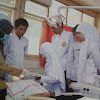Forms of Dental Topical Anesthetic:
1. Spray Form
It contains certain local anesthetic agents that may be used for this purpose because of the action goes pretty fast. The active ingredient contained in the solution is 10% lignocaine hydrochloride in water base released in small amounts of aerosol container.
The addition of a variety of fruit flavors is intended to make the preparation more tolerated by children, but it can actually cause problems due to stimulation of excessive salivation. When anesthesia is done by using spray, the solution can generally be easier distributed and the effect will be more extensive than we want. Anesthetic onset time is 1 minute and the duration is 10 minutes.
2. Ointment
It contains 5% lignocaine hydrochloride that can also be used for the same purpose, but it takes 3-4 minutes to give the effect of anesthesia. Some pharmaceutical industries even include hyaluronidase enzyme in their products in hopes of helping the penetration of local anesthetic agent in the tissue. Amethocaine and benzocaine are generally added in this preparation.
3. Emulsion
It contains 2% lignocaine hydrochloride that can also be used. This emulsion will be very useful if we want to print the entire oral cavity of a patient who is very easy to get nausea. A teaspoon of emulsion can be used by the patient to gargle around the oral cavity and oropharynx and then allowed one to two minutes; the rest is spat right before printing. The emulsion can also be useful for reducing postoperative pain after gingivektomidan that is not harmful if swallowed accidentally.
4. Ethyl chloride
It is sprayed on the skin or mucosa that will evaporate quickly so as to cause anesthesia through cooling effect. Clinical benefit only happens if the spray is directed to limited area by cotton or a cotton bud until ice steam arises.
Advertisement


